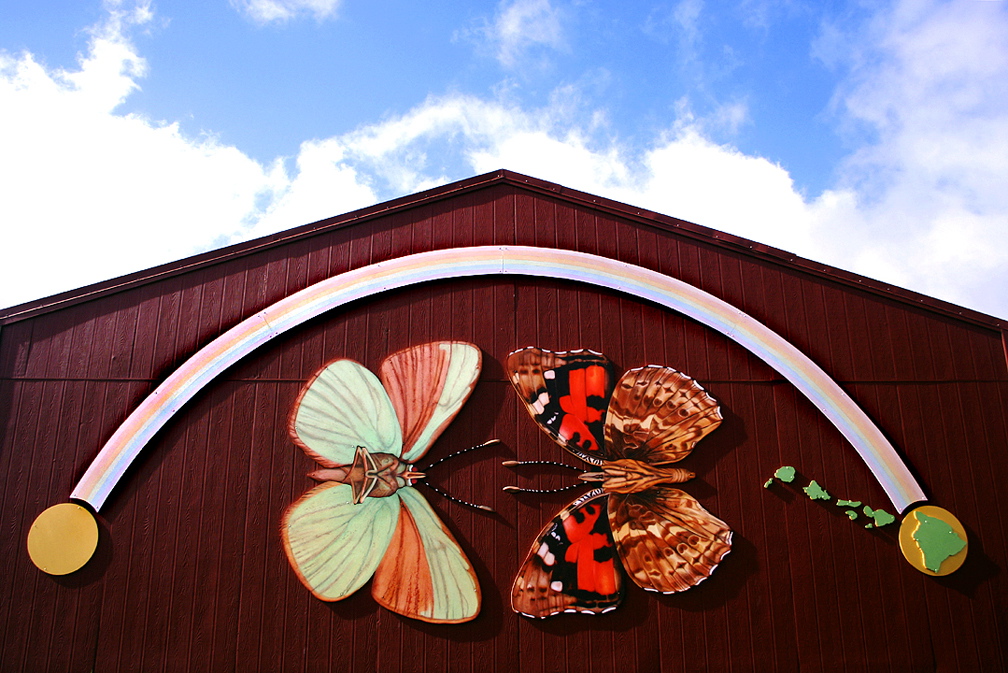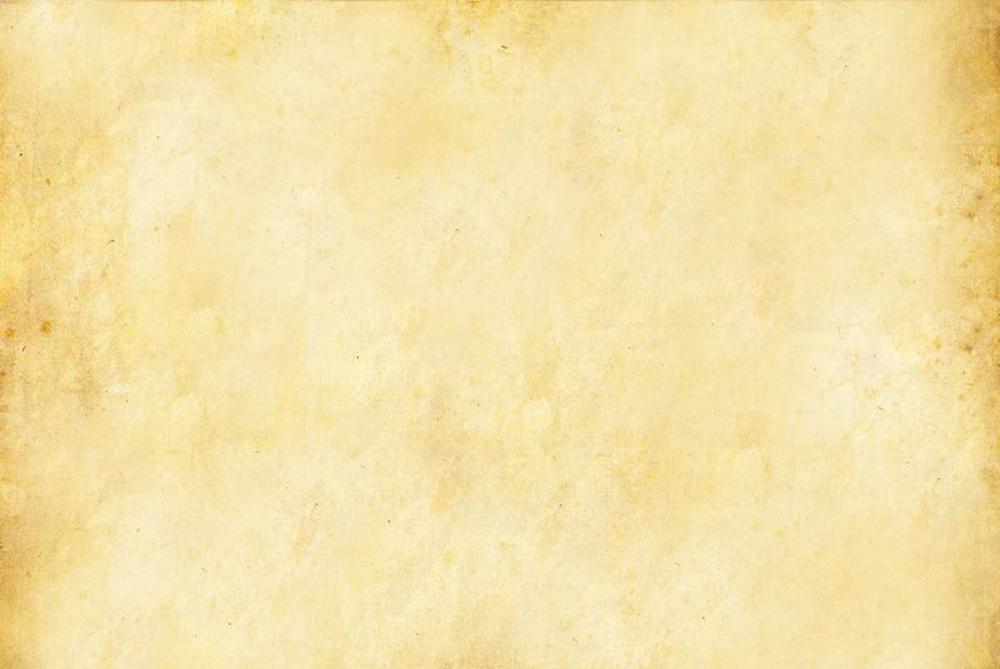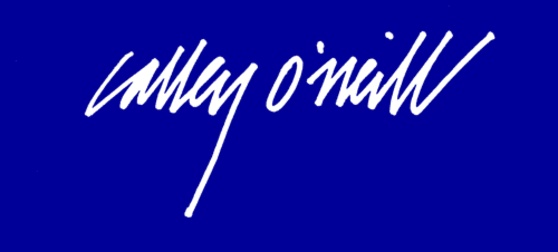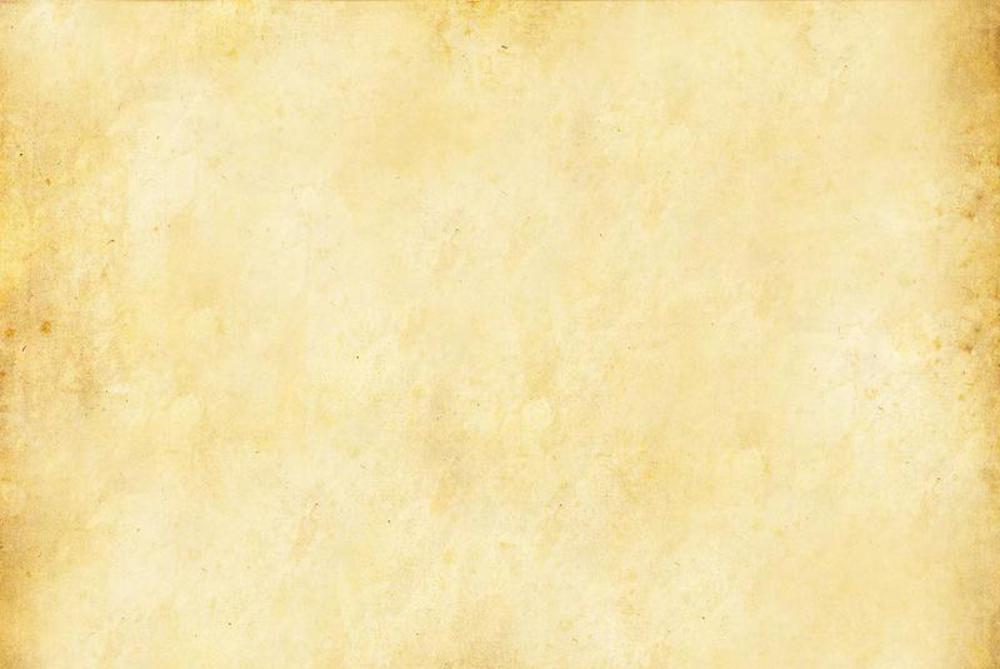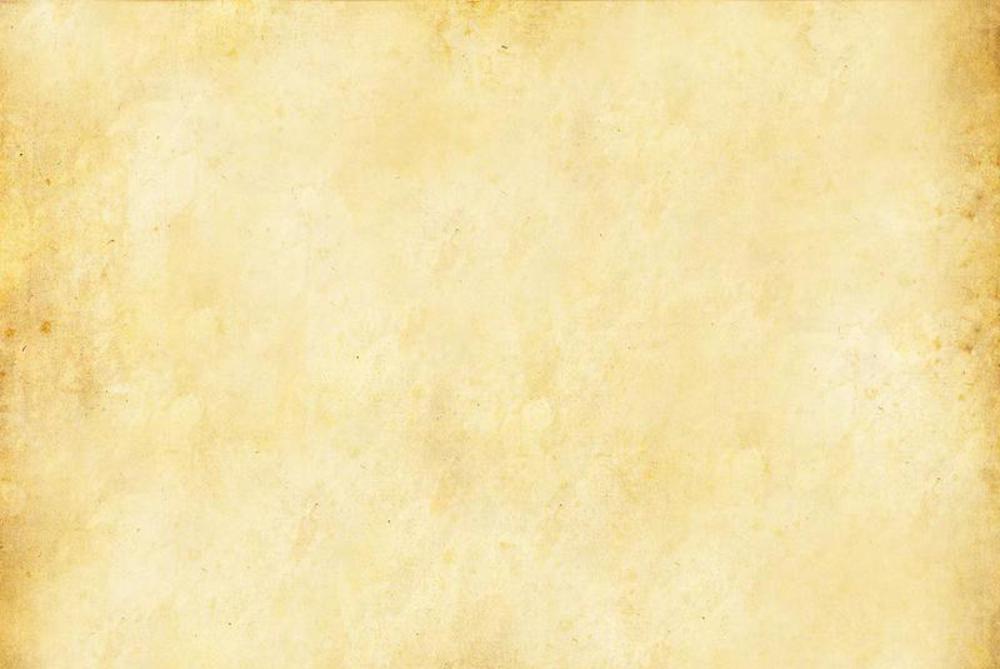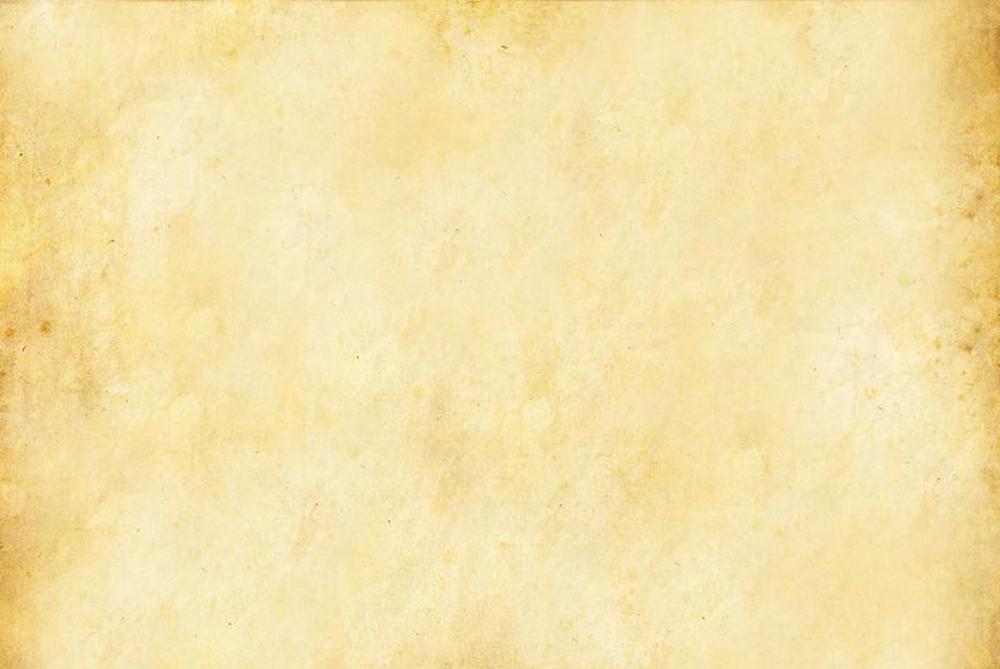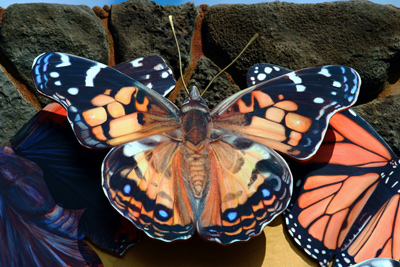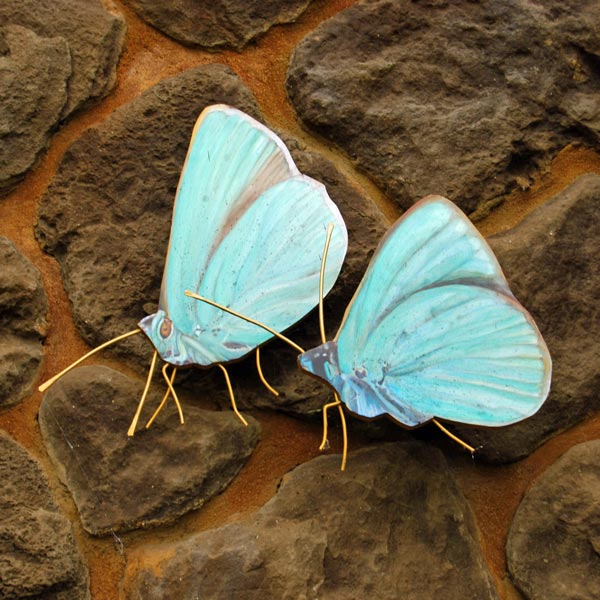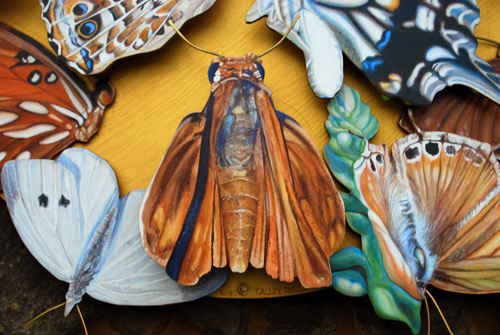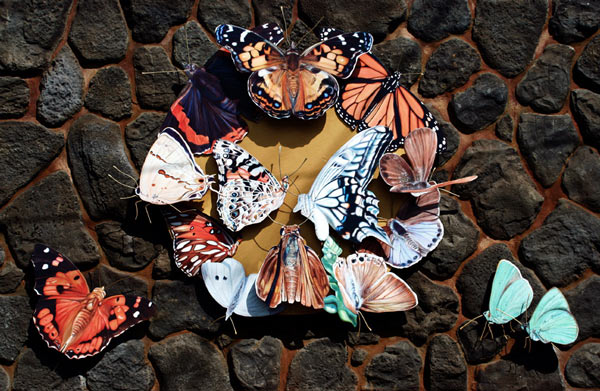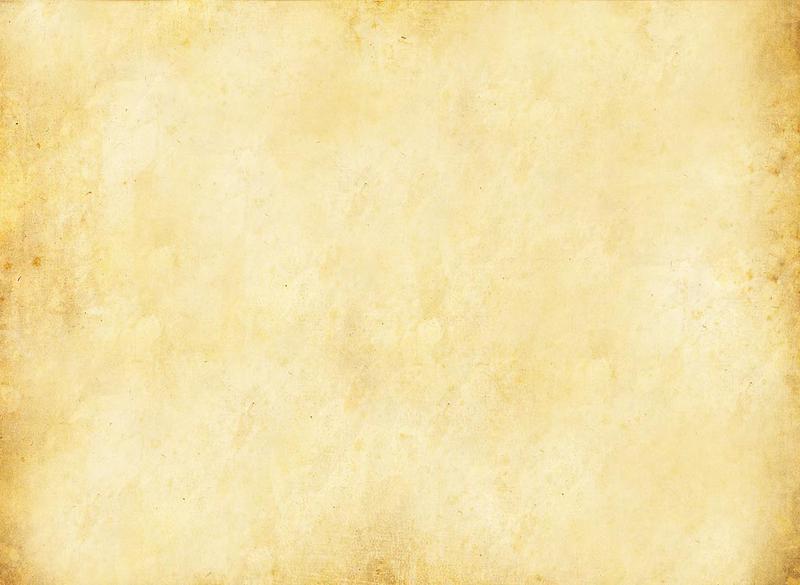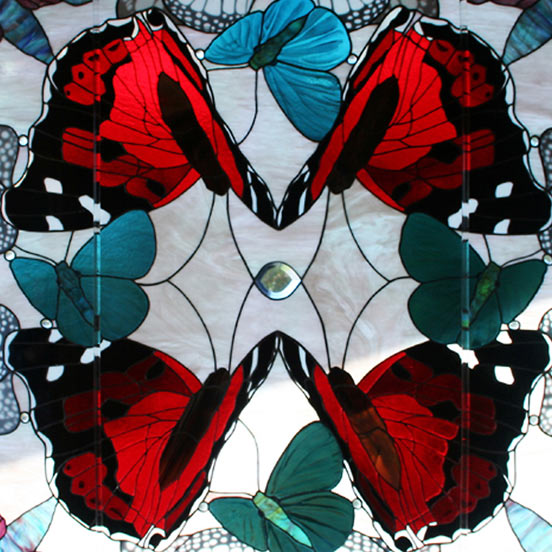Hawai’i has just two endemic species of butterflies: Pulelehua (which now is the word for all butterflies) a monarch known commonly as The Kamehameha butterfly and the second, much smaller one is the Hawaiian Blue butterfly, also known as the Koa butterfly, or Blackburn’s little blue butterfly.
Pulelehua originally referred to the Kamehameha butterfly and is now the word for all butterflies.
Hawaiian Native Butterflies
Hawaiian Native Butterflies (10’ X 20’) exterior relief mural, Politec on panels relief Malama Pono Center, Kamuela, Hawai'i.
Art and Soul for the Earth
Big Island of Hawai'i
Pulelo means to float or to undulate in the air, and lehua is the famous blossom of the ‘Ohia lehua tree (Metrosideros polymorpha): thus the name means one that floats through the air from one lehua blossom to another.
This mural depicts the only two native (and endemic) Butterflies of Hawai’i: a monarch known as The Kamehameha Lady or The Kamehameha Butterfly (Vanessa tameamea) and the much smaller, very rare Hawaiian Blue or Blackburn’s Blue, often called the Koa Butterfly (Udara blackburni). The Kamehameha is also known as Lepelepe-o-Hina (sister of the fire goddess, Pele), which translates to Hina’s fringe wing. The official insect of the state of Hawai’i, the Kamehameha is named after the last king of the sovereign Native Hawaiian monarchy.
The 1878 scientific name is a somewhat amusing, inaccurate translation of King Kamehameha’s name as the scientific nomenclature is written as tameamea. The avid backpacker can see the Kamehameha Lady along mountain trails and forest openings on all the main Hawaiian Islands except Kahoolawe. Its’ principal host plant is the native nettle, mamaki.
Also shown is the rare White Monarch called the Kona Morph, unique to the Big Island of Hawai’i. The lovely Kona Morph has distinctive dark sections of the margins of its dorsal forewings on a pure white ground. There is also an Oahu Morph with more black and a Kaua’i Morph, which is brownish instead of white. The Hawaiian blue has beautiful iridescent green scales underneath its wings, thus the name and bluish brown scales on the top.
Imagine my surprise and delight (and his too), when, having completed the design work and most of the glaze painting for this mural, I received this email from Jim Denny, whose spectacular photographs form the basis of this mural.
Calley,
I thought you would be interested to know that I have recently discovered and am the first to photo-document the first new butterfly species in Hawaii in 30 years! It is the Large Orange Sulphur (Phoebus agarithe). It is our first yellow butterfly. It is native to extreme South Texas and to most of Mexico and Latin America.
The Butterflies of Hawai'i
At this point I do not know how it was introduced to the Hawaiian Islands. I first saw it on Maui last December and on the Big Island in May. I am now seeing it here almost daily. It is extremely difficult to photograph as it almost never lands (a frustrating characteristic also exhibited by the Chinese Swallowtail). I have attaché some photos for you to paint. Aloha, Jim Denny.
The Butterflies of Hawai’i, 2005, is an architectural painted relief by Calley O’Neill with Jim Sender and Lamar Yoakum. It is done in Politec, which is the first acrylic paint in the world formulated by the Mexican mural masters and a chemist at the Polytechnical Institute in Mexico City. The well-sealed exterior work, approximately 7’ by 11’, is done on marine plywood and mounted on the stone wall.
Inside the main circle are the malihini butterflies, or introduced species. Outside, directly on the stone wall, are the precious natives:
- The Kamehameha Lady (Vanessa tameamea, Eschscholtz, 1821, 2 1/4 to 3 inches) is on the left
- Hawaiian Blues. (Udara blackburni, Tuely, 1878, measuring 7/8 to 1-1/8 inches) on the right.
The butterfly is a universal symbol of hope and transformation. When Arlene Block, then president of The Waimea Outdoor Circle suggested to Calley a focus on native butterflies for the mural, Calley was off and running. She found herself immersed in a study of all the butterflies that reside in the Hawaiian Islands.
Calley’s freehand drawings and paintings are based on the outstanding work of photographer and Hawaiian butterfly expert, Jim Snyder of Kona. Jim has been photographing butterflies here for over twenty years, allowing people to delight in their ephemeral beauty, often not so easily witnessed. Several of the butterflies, like the Chinese Swallowtail and the Large Orange Sulphur rarely land, making them extremely difficult to capture on film. Calley reviewed over 1,000 of Jim’s photos to select her portrait references.
Very few individuals in the world have ever glimpsed Hawai’i’s only two endemic butterflies. Included in the painted relief are all 16 butterflies that live and thrive here. “It is my hope that these works of art will bring awareness and appreciation to these delicate and magnificent Hawaiian treasures and joy and inspiration to those who see it.”
For more information on Hawaiian butterflies, see Jim Snyder’s terrific web site http://community.webshots.com/user/gmanager999, and read Hawai’i’s Butterflies and Moths, An Identification Guide to Easily Observed Species, by Dean Jamieson and Jim Denny, Mutual Publishing.
The Butterflies of Hawai'i exterior relief mural, Politec on panels (8’ X 12’) and (10’ X 20’) relief Malama Pono Center, Kamuela, Hawai'i
In the circle from the top around to the right are:
- The American Painted Lady or Painted Beauty (Vanessa virginiensis 1-3/4 to 2-1/2 inches),
- the Monarch (Danaus plexippus, 3-1/2 to 4 inches),
- The Western Pygmy Blue (Brephidium exilis. This minute butterfly measures 3/8 to 3/4 inch and is the smallest North American butterfly and one of the smallest in the world. It has an unusual degree of size variation in Hawai’i).
- The Pea Blue or The Long-tailed Blue (Lampides boeticus, 1 to 1/38 inches),
- The Lantana Scrub Hairstreak or The Smaller Lantana Butterfly (Strymon bazochii, 7/8 to 1-1/8 inch, only in Hawai’i and extreme south Texas and Florida),
- The Fiery Skipper (Hylephila phyleus, about 1-1/4 inches),
- The Cabbage Butterfly (Pieris rapae, 1-5/8 to 2-1/4 inches),
- The Red Spotted Hairstreak (The Larger Lantana Butterfly, 1 to 1-1/4 inches, only in Hawai’i, and extreme south Texas and Florida),
- The Gulf Fritillary or The Passion Vine Butterfly (Agraulis vanillae, 2 to 3 inches, with an unusual range of sizes in Hawai’i.),
- The Red Admiral (Vanessa atlanta, 1-3/4 to 2-1/4 inches) and in the center on the left,
- The Painted Lady or Cosmopolite (Vanessa cardui, 2 to 2-5/8 inches), and center right,
- The Citrus or Chinese Swallowtail (Papilio xuthus, 2-1/2 to 4-3/8 inches, only in Hawai’i).
- The newly discovered Large Orange Sulphur (Phoebis agarithe) appears in stained glass on the wall.
- The Banana Skipper (Erionota thrax, about 2-1/2 inches, only in Hawai’i) is perched on a stone, just below the Malama Pono lettering.
Malama Pono
Calley named the building Malama Pono, and cut out and painted the wood letters gold for the stone wall.
In Hawaiian, Malama means to care for or to take good care of; and pono means goodness or righteousness. Malama pono means to nurture righteousness and take care of the essential goodness of life. The term Malama pono is often said as an everyday blessing, meaning to take care of yourself, your body and your life. “It is my hope that each time a passersby sees the words Malama pono in gold on the stone wall, they will pause for a minute to take care of their precious life. Here are five simple yet powerful practices.”
1. Offer gratitude. As taught to Calley by her Kumu, Papa Henry, offer gratitude to the Source by saying mahalo five times and giving thanks for your life and all of your blessings. Gratitude heals! MAHALO MAHALO MAHALO MAHALO MAHALO
2. Take five slow, long deep breaths, nourishing your body, quieting your mind, balancing your emotions and connecting to the Source. Nothing brings peace and healing faster than deepening your breath.
3. Smile, and send your smile inside to your vital organs.
4. Drink a bottle of Hawaiian artesian or filtered water.
5. Express your love to whomever you are with at the moment.
The magical process of butterfly metamorphosis provides a hopeful analogy for fulfilling individual potential and personal evolution. The symbol of the butterfly is a reminder that one’s life situation, no matter how challenging, carries within it the precise conditions needed for metamorphosis. From wherever one is, it is possible to come home to love, peace and healing.
The Jewels of Hawai'i, 2005 (5 ½’square) public stained glass mandala window with kiln fired glaze painting. This work is a three-way collaboration with photographer and butterfly expert, Jim Denny and stained glass artisan Lamar Yoakum at Malama Pono Center, Kamuela, Hawai’i.
Hawai’i has just two endemic species of butterflies:
Pulelehua (which now is the word for all butterflies) a monarch known commonly as The Kamehameha butterfly and the second, much smaller one is the Hawaiian Blue butterfly, also known as the Koa butterfly, or Blackburn’s little blue butterfly. Unfamiliar to most residents and visitors, the two butterflies are forest and mountain dwellers rarely seen by anyone, save avid hikers and keen observers of nature in native upland forests.
Email: Calley@CalleyO'Neill.com
The Jewels of Hawai'i
Pulelehua originally referred to the Kamehameha butterfly and is now the world for all butterflies. Pulelo means to float or to undulate in the air, and lehua is the famous blossom of the ‘Ohia lehua tree (Metrosideros polymorpha): thus the name means one that floats through the air from one lehua blossom to another. The window depicts the only two native and endemic butterflies of Hawai’i: a monarch known as The Kamehameha Lady or The Kamehameha Butterfly (Vanessa tameamea) and the much smaller, very rare Hawaiian Blue or Blackburn’s Blue, often called the Koa Butterfly (Udara blackburni). The Kamehameha is also known as Lepelepe-o-Hina sister of the fire goddess Pele, which translates to Hina’s fringe wing.
The official insect of the State of Hawai’i, the Kamehameha Butterfly is named after the last King of the sovereign Native Hawaiian monarchy. The 1878 scientific name is a somewhat amusing, inaccurate translation of the King’s name as it is written, Tameamea. The avid backpacker can see the Kamehameha Lady along mountain trails and forest openings on all the main Hawaiian Islands except Kaho'olawe. Its’ principal host plant is the native nettle, Mamaki (Pipturis albidus).
The elusive Hawaiian Blue’s main host is the mighty koa tree (acacia koa). They are joined in each corner by the extremely rare Fabulous Green Sphinx moth (Tinostoma smaragditis) Meyrick, 1899, about 3-1/2” wide, endemic to the Alaka’i Swamp on Kaua’i. Perhaps seven or eight individuals in the world have ever seen this creature. In this window, the sphinx represents the 1,200 moth species native to Hawai’i.
Also shown is the rare White Monarch called the Kona Morph, unique to the Big Island of Hawai’i. The lovely Kona Morph has distinctive dark sections of the margins of its dorsal forewings on a pure white ground. There is also an Oahu Morph with more black and a Kaua’i Morph, which is brownish instead of white. The Hawaiian Blue has beautiful iridescent green scales underneath its wings, thus the name and bluish brown scales on the top.

